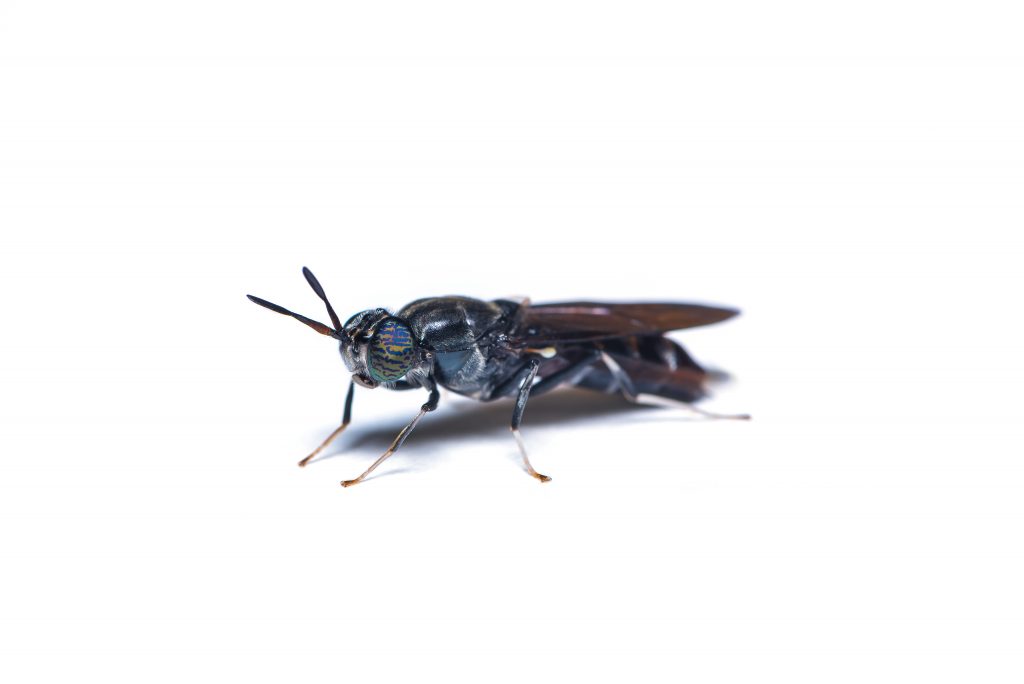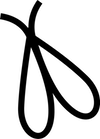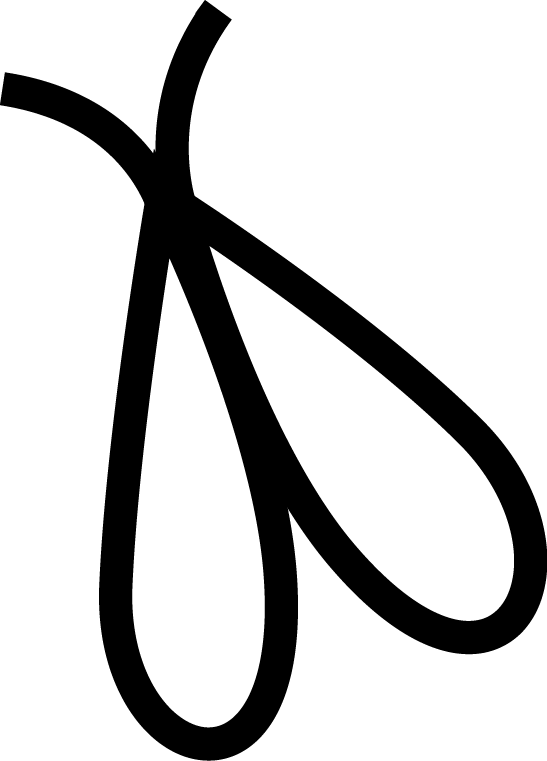The model is based on the industrial application of Hermetia illucens (black soldier fly) as a converter of organic matter. This species has been selected for its high capacity to convert a large variety of waste of different kinds, for allowing its industrial production at very high densities, and for not being considered a pest or an insect that could have a negative impact on the environment.
INDUSTRIAL APPLICATIONS
The objective is the generation of diverse products with added value, starting from waste, and using insects as biofactories.
Among the residues that we have already valued to a greater or lesser extent are those coming from the hotel industry, vegetable waste from horticultural crops, fruits, by-products of the viticulture industry (skins and sediments from yeasts), from the brewing industry (bagasse and yeast sediments), residues obtained in the production of cane sugar, molasses or beets, residues of industrialization of olive oil or oils from seeds, etc.
In this valuation model, a waste, or a group of them, are previously characterized and either separately, or by designing a balanced mix of all of them, they are arranged in the production system. An established amount of larvae is available on this food, which in a cycle of only 12 days are able to increase its mass by 50 times.
This larval mass is subsequently processed to obtain products with added value, such as defatted flours with a high protein content, fatty acids, compost, etc.
Currently the legislation allows the inclusion of this type of flours in animal feed, for pets and aquaculture, and for human consumption (previous registration), provided that residues are used mostly of plant origin. It is expected that by 2020 its inclusion in feed for monogastric animals will be allowed. The advantages of including this type of flours in animal feed have already been scientifically described.
The competitive advantage of this model is clear: we start from a waste with little value, and we obtain a variety of products with added value in a biological cycle of only 12 days, without producing contaminants or unwanted by-products.
The approximation is similar to the valuation model, but underlining that the objective is the reduction of the waste taking advantage of the insect’s conversion capacity, and not the generation of products with high added value.
In this model we would select waste as manure from livestock (with special interest in poultry litter), slurry, sludge from WWTP, digestates, etc. This waste poses a continuous problem not only for the producers of this waste, but also for the managers that must collect and process them.
In this process, after the characterization of the waste, these would be introduced into the system (mixed or not with other waste), and a certain amount of larvae would be established on the waste. In this case, the larval cycle would lengthen to about 20-27 days, since the nutritive content of these feeding substrates is much lower, and the obtained larval mass will also be lower.
Waste reduction is centered around two criteria and objectives.
Volume reduction: 60-70% Reduction of pathogenic microbial load: ex. 109 ->102 *
* Depends on the initial load and desired end. Final objective depends on whether it will give you further treatment.
Both objectives must be quantified and validated, since they depend on the specific mix of waste, how standard it is and its previous and subsequent handling. For example, the total lapse of time (storage,
transport, temperature, etc.) before being all mixed and the application of the larvae can have an effect on the pH, and this in turn the quantity and effectiveness of the larvae.
The technical advantage of using larvae of the species Hermetia illucens is that by making ‘ideal’ mixtures of different residues, mixtures can be processed that could not be treated in another way or at very high costs.
The competitive advantage of this treatment method is that variants can be developed for each mixture according to the needs of each specific geographical region; or legislative requirements. It opens a market that has not yet been attended to and explored.


PHASE 1

PHASE 2

PHASE 3
PHASES OF SERVICE
From Entomo AgroIndustrial we propose a project in 3 phases that allow us to collect the economic and technical information necessary to establish a model of implementation of the objective technology, profitable and sustainable over time.
Objective
Obtain economic and technical information on the waste management process currently performed by the client in their work centers.
Tasks to do
- Mapping the organic matter produced in each of the work centers: taking into account aspects such as: type of waste, quantity, seasonality, etc.,
- Analyze the current strategies developed by the client for the management of organic matter generated in their work centers.
- Analyze legal aspects of each of the location where the client operates in relation to the management and treatment of waste.
- Visit the client’s facilities for the collection of information in situ.
Duration
1 month.
Objective
Validation of waste in the Agroindustrial Entomo Research Center.
Description of activities
-
Preliminary activity to the validation: To start from a solid knowledge base, the waste proposed will be analyzed separately. In this way we will obtain the necessary nutritional and microbiological information to carry out the validation protocols.
-
Waste validation: To carry out the validation of the waste, a test matrix will be prepared, which will contain the validation of each waste separately, and a calculated combination between them, with the objective of
preparing mixtures that complement the nutritional needs of insects. For the realization of these tests the samples collected in the client’s work centers will be used. It is estimated that some 1,000 kilograms will be needed, collected at three different times over a month.
-
Data analysis: The collection and analysis of data will be carried out in parallel to the validation process. The collected data will include biological parameters (biomass reached, time of development), nutritional parameters (basic composition of the residues and larvae, amino acid profile), and certain indices related to the productive capacity (yield, reduction of volume, conversion rate , conversion efficiency, protein conversion ratio, etc.).
-
Conclusions: The conclusions will gather the capacity of the black soldier fly for the conversion of each one of the residues and their combinations, providing a real and exportable information to the market study, and the design of the factory. Likewise, they will provide information on what types of products with high added value are going to be generated with this type of waste.
Duration
2 months
Objective
Preparation of an economic-financial plan that accurately reflects the size and characteristics of the facilities destined to the customer’s waste processing, as well as the income and expense flows that will derive from its operation, paying special attention to the prospects of the activity in terms of recovery period of the investment made and generation of profitability.
At the end of the process, we will be able to establish different strategies for the collection and conversion and indirect direct benefits of using this new tool for waste valorization that we propose from Agroindustrial Entomo.
Description of activities
The development of the Business Plan requires the involvement of both parties, Entomo AgroIndustrial brings the experience of its team, formed by professionals with experience in all areas necessary for the development and implementation of the same: economic / financial, legal, engineering / technical, commercial / marketing and project management and planning, which allows to develop and implement the business plan with guarantees.
Duration:
2 weeks




